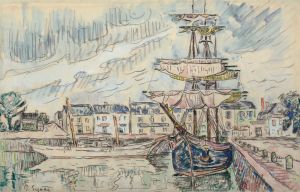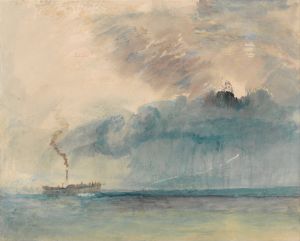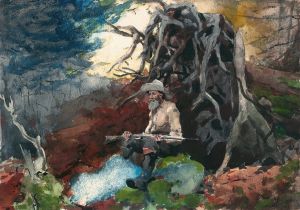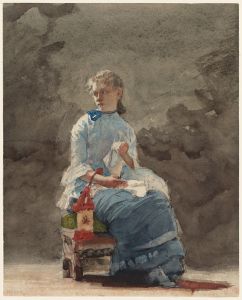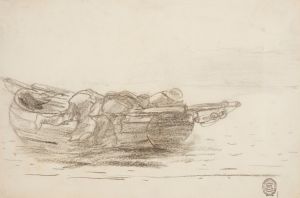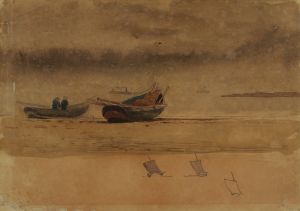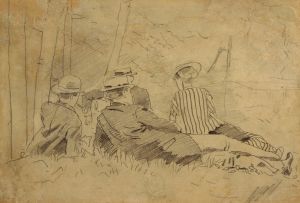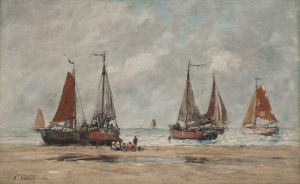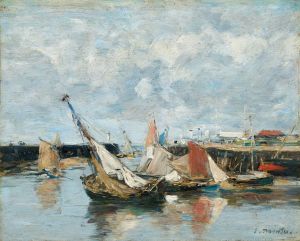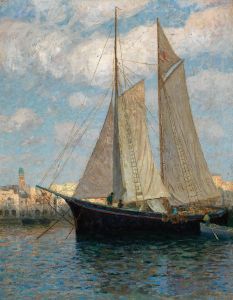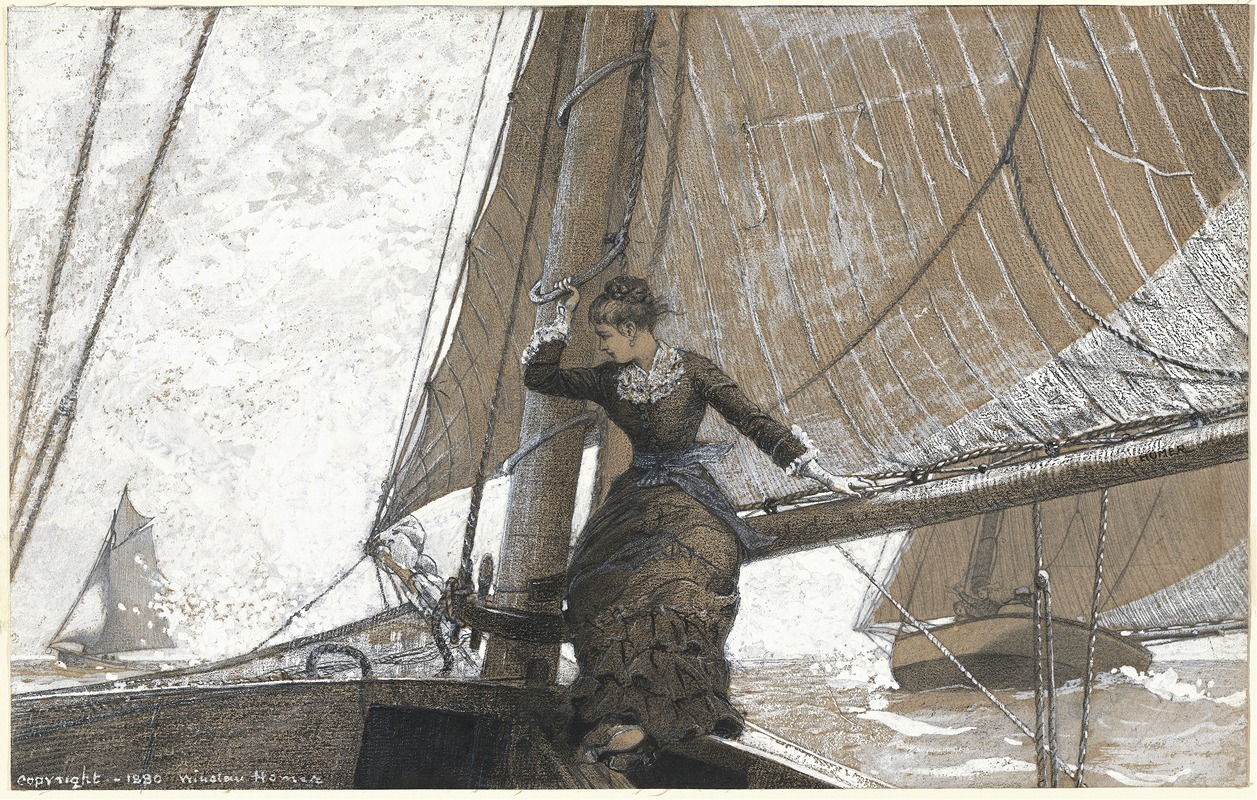
Yachting Girl
A hand-painted replica of Winslow Homer’s masterpiece Yachting Girl, meticulously crafted by professional artists to capture the true essence of the original. Each piece is created with museum-quality canvas and rare mineral pigments, carefully painted by experienced artists with delicate brushstrokes and rich, layered colors to perfectly recreate the texture of the original artwork. Unlike machine-printed reproductions, this hand-painted version brings the painting to life, infused with the artist’s emotions and skill in every stroke. Whether for personal collection or home decoration, it instantly elevates the artistic atmosphere of any space.
"Yachting Girl" is a watercolor painting created by the renowned American artist Winslow Homer in 1879. Homer, known for his marine subjects and mastery of watercolor, captures a serene and intimate moment in this artwork, which is part of his broader exploration of leisure activities and the natural environment.
The painting depicts a young woman seated in a sailboat, her gaze directed out over the water. She is dressed in the typical fashion of the late 19th century, wearing a long dress and a hat, which suggests both the style and social norms of the period. The setting is likely along the coast of New England, a region that Homer frequently visited and which served as a significant source of inspiration for his work. The calm waters and gentle breeze implied by the sail's position contribute to the tranquil atmosphere of the scene.
Homer's use of watercolor in "Yachting Girl" is particularly noteworthy. Watercolor, a medium that requires precision and skill due to its fluidity and transparency, allows Homer to convey the delicate interplay of light and shadow on the water and the boat. His technique involves layering washes of color to build depth and texture, capturing the ephemeral qualities of light and the reflective surface of the sea. This approach not only highlights his technical proficiency but also his ability to evoke mood and emotion through subtle variations in color and form.
The composition of "Yachting Girl" is carefully balanced, with the figure of the girl positioned slightly off-center, creating a sense of movement and dynamism. The diagonal lines of the sail and the boat guide the viewer's eye across the painting, enhancing the feeling of being on the water. This compositional choice reflects Homer's interest in the interaction between humans and nature, a recurring theme in his body of work.
During the late 19th century, yachting and other leisure activities became increasingly popular among the American middle and upper classes, reflecting broader social and economic changes. Homer's depiction of a young woman engaged in such an activity can be seen as a reflection of these societal shifts, as well as an exploration of themes related to modernity and individual experience.
"Yachting Girl" is part of a larger series of works that Homer produced during his time in Gloucester, Massachusetts, where he spent the summer of 1879. This period was particularly productive for Homer, as he created numerous watercolors that captured the essence of coastal life and the burgeoning leisure culture of the time. These works are celebrated for their spontaneity and freshness, qualities that have contributed to Homer's enduring reputation as one of America's foremost watercolorists.
Today, "Yachting Girl" is held in the collection of the Art Institute of Chicago, where it continues to be appreciated by audiences for its artistic merit and historical significance. The painting exemplifies Homer's ability to blend technical skill with a keen observation of the world around him, resulting in a work that resonates with viewers both for its beauty and its insight into the cultural landscape of 19th-century America.





